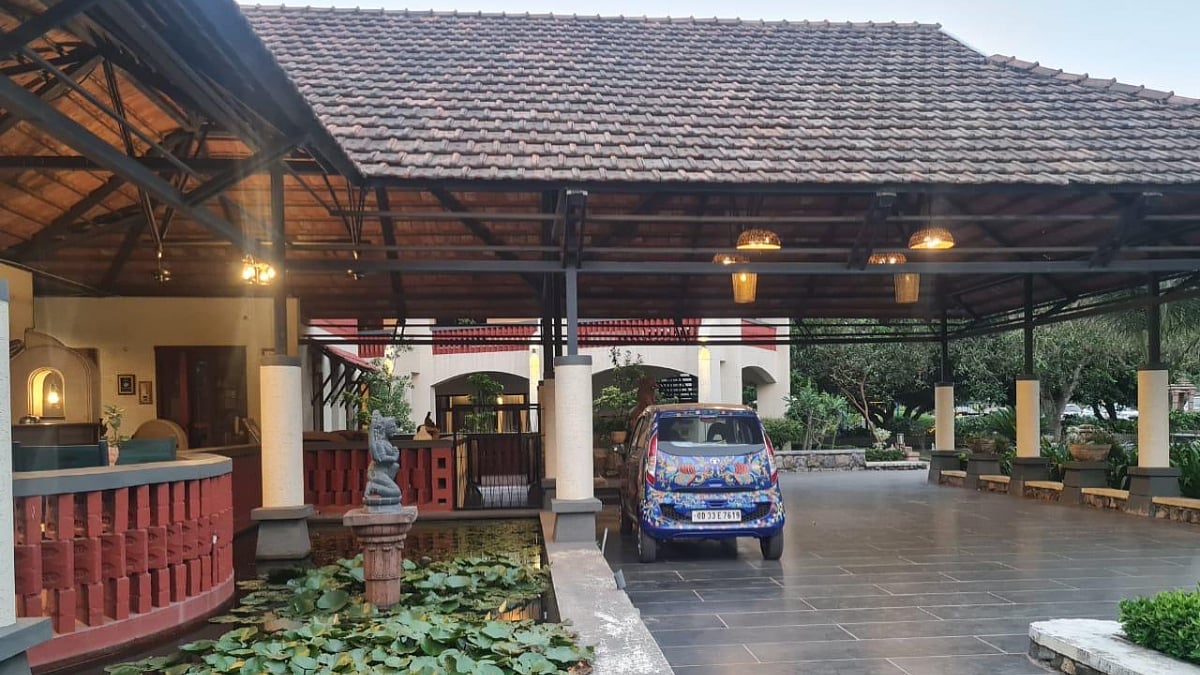Resort Planning And Landscape Integration Approach To Hospitality Architecture In Natural Settings
Resort planning in environmentally sensitive areas represents one of the most challenging aspects of contemporary hospitality architecture, requiring architects to balance commercial viability with ecological responsibility.

Resort Planning And Landscape Integration Approach To Hospitality Architecture In Natural Settings | File Photo
Resort planning in environmentally sensitive areas represents one of the most challenging aspects of contemporary hospitality architecture, requiring architects to balance commercial viability with ecological responsibility. Modern resort design has evolved beyond traditional approaches that imposed built environments upon natural settings, instead embracing methodologies that integrate architectural elements with existing landscape features. This evolution reflects growing awareness that successful hospitality developments must enhance rather than compromise the natural environments that attract visitors, creating symbiotic relationships between built and natural systems.
In tropical and subtropical regions, resort planning faces additional complexities related to water management, climate responsiveness, and preservation of indigenous ecosystems. Architects must develop strategies that work with natural drainage patterns, seasonal flooding cycles, and local topography while creating facilities that provide contemporary comfort standards. The challenge becomes particularly acute in areas where traditional building practices have evolved sophisticated responses to local environmental conditions, requiring contemporary designers to understand and reinterpret vernacular wisdom through modern construction methods.
India's hospitality sector has witnessed significant growth in eco-tourism and nature-based resort development, particularly in regions where natural beauty and cultural heritage create unique destination opportunities. Eastern India, with its diverse landscapes ranging from coastal plains to forested hills, has emerged as a significant area for resort development that emphasizes integration with natural settings. This regional context demands architectural approaches that respect local ecological systems while providing facilities that meet evolving tourism expectations.
S.S. Ray's design of the Coconut Peninsula Country Resort demonstrates a comprehensive approach to landscape-integrated hospitality architecture. Located in the Mahanadi-Brahmani deltaic plains at Mania, Bhagatpur in Cuttack District, Odisha, the project exemplifies how contemporary resort planning can transform marginal agricultural land into a vibrant ecosystem while creating a distinctive hospitality destination. The resort's development strategy centered on creating a 10-acre artificial lake, Silver Lake, through innovative water management techniques that utilized local geological conditions.
The creation of Silver Lake represents a significant achievement in landscape engineering, utilizing the site's natural topography and geological formations to establish a perennial water body. S.S.Ray's approach involved understanding the local hydrology, including the porous, fissured subsoil formations and seasonal stream flows from surrounding hillocks, to create a sustainable water system. This water management strategy transformed barren lateritic upland into a functioning aquatic ecosystem, demonstrating how architectural intervention can enhance rather than degrade natural environments.
The resort's master planning reflects sophisticated understanding of how hospitality facilities can be integrated with created landscapes. The one-acre peninsula, constructed using cut-and-fill methods within Silver Lake, provides the primary setting for guest accommodations while creating dramatic water views from multiple vantage points. This approach ensures that the architectural intervention becomes part of the landscape composition rather than an imposition upon it, with buildings and outdoor spaces working together to create cohesive experiential sequences.
S.S Ray's architectural vocabulary for the resort represents a contemporary reinterpretation of local vernacular traditions, utilizing indigenous construction techniques and natural materials while incorporating modern amenities and comfort systems. The buildings demonstrate how traditional aesthetic principles can be adapted to contemporary hospitality functions, creating architecture that feels rooted in place while meeting current operational requirements. This approach extends to the integration of recreational facilities, including the bamboo bridge, amphitheatre, and various water-based amenities that enhance the natural setting rather than competing with it.
ALSO READ
The resort's success as both an architectural project and a hospitality destination illustrates the potential for responsible tourism development that creates economic opportunities while preserving and enhancing natural environments. S.S Ray's approach to the Coconut Peninsula project demonstrates how comprehensive landscape planning, sensitive architectural design, and innovative environmental management can combine to create hospitality destinations that contribute positively to their regional contexts while providing distinctive visitor experiences.
RECENT STORIES
-
-
-
-
-